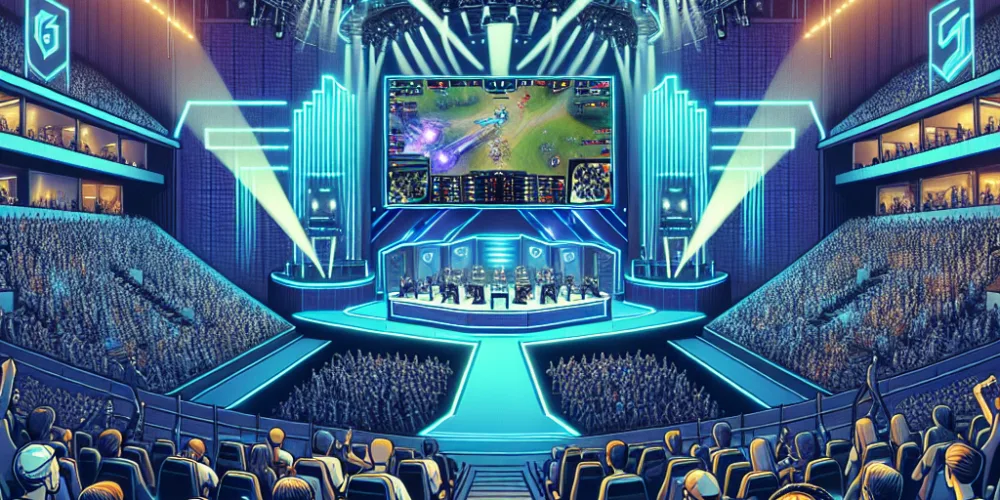In recent years, video gaming has evolved from a solitary activity confined to living rooms and dens to a vibrant spectator sport with its own arenas and massive global following. This transformation is largely due to the explosive growth of esports, a sector that is not only redefining entertainment but also reshaping urban landscapes with the emergence of dedicated esports venues.
Esports, or competitive video gaming, has gained tremendous popularity, drawing players, fans, and big-money investments. With titles like “League of Legends,” “Overwatch,” and “Fortnite” at the forefront, the industry has seen a slew of purpose-built esports arenas pop up around the world. These venues are designed to offer a fan experience that rivals traditional sports, complete with massive screens, booming sound systems, and seating designed to keep fans at the center of the action.
The Epicenter of Esports Architecture
One of the trailblazers in this arena is the HyperX Esports Arena located in Las Vegas. Opened in 2018, this 30,000 square foot multi-level complex is a gamer’s paradise, equipped with state-of-the-art gaming technology, broadcast facilities, and a production studio. Its design caters to both players and spectators, making it an ideal venue for both local battles and international tournaments.
Such venues are not just gaming hubs but are also designed to enhance the spectator experience. They feature large, unobstructed viewing areas, comfortable seating, and food and beverage services that cater to a tech-savvy audience. Moreover, they are equipped with the latest in streaming technology, allowing events to be broadcast to millions of viewers worldwide.
Economic and Cultural Impacts
The rise of these esports arenas has significant economic and cultural implications. Economically, they generate revenue through ticket sales, concessions, merchandise, and hosting fees for tournaments. These venues also create jobs ranging from event organization and security to broadcasting and hospitality.
Culturally, they provide a gathering place for the gaming community and offer a platform for gamers to refine their skills and compete at higher levels. Additionally, these venues help legitimize esports as a mainstream form of entertainment, akin to traditional sports like basketball or football.
Global Expansion and Future Trends
The success of arenas like the HyperX Esports Arena has spurred plans for more elaborate venues globally. In Toronto, plans are underway for a 7,000-seat esports venue which aims to be the largest esports facility in Canada. Similarly, in Philadelphia, the Fusion Arena promises to be the largest new-construction, purpose-built esports arena in the Western Hemisphere.
Looking to the future, the trend towards building dedicated esports venues is expected to accelerate. Analysts predict that as the global esports audience grows — projected to reach nearly 646 million by 2023 — so too will the infrastructure supporting it. This includes not only arenas but also training facilities and gaming lounges.
Moreover, as virtual reality (VR) and augmented reality (AR) technology advance, there is potential for these technologies to be integrated into esports venues, further enhancing the spectator experience. Imagine watching a live esports event where, through AR glasses, you can see real-time stats hovering around the players, or through VR, being able to experience the game from the player’s perspective.
Conclusion
The development of esports arenas is a testament to the growing popularity and influence of competitive gaming. These venues are more than just places to host events; they are cultural hubs that promote community, technological advancement, and a new era in sports entertainment. As esports continues to break boundaries and stigmas, the rise of dedicated venues is not just changing the landscape of gaming, but also that of global sports and entertainment.

David Farbacu is a seasoned writer with a passion for games, gaming, casinos, and Xbox. With a wealth of experience in the industry, David brings insightful reviews, comprehensive guides, and engaging articles that cater to both casual gamers and hardcore enthusiasts. His expertise spans across various gaming platforms and genres, making him a go-to source for the latest trends and developments in the gaming world.

